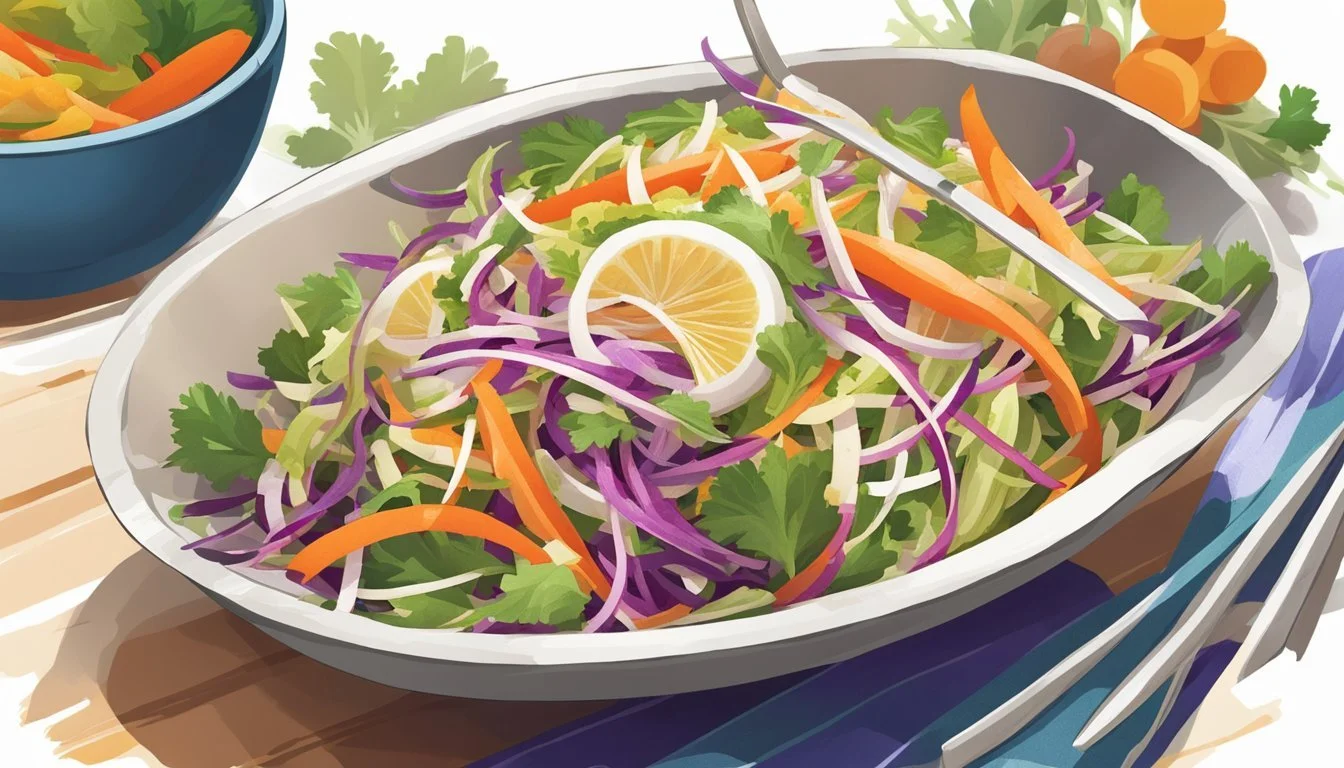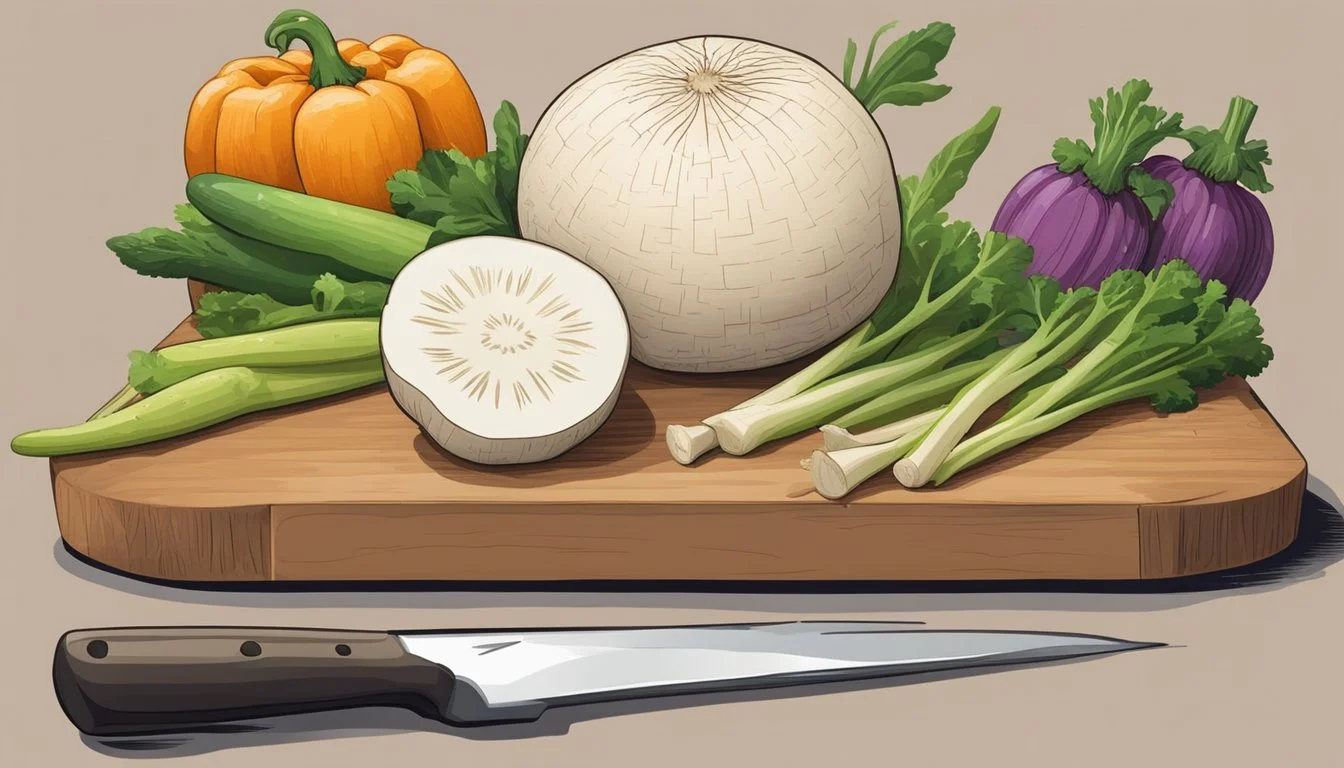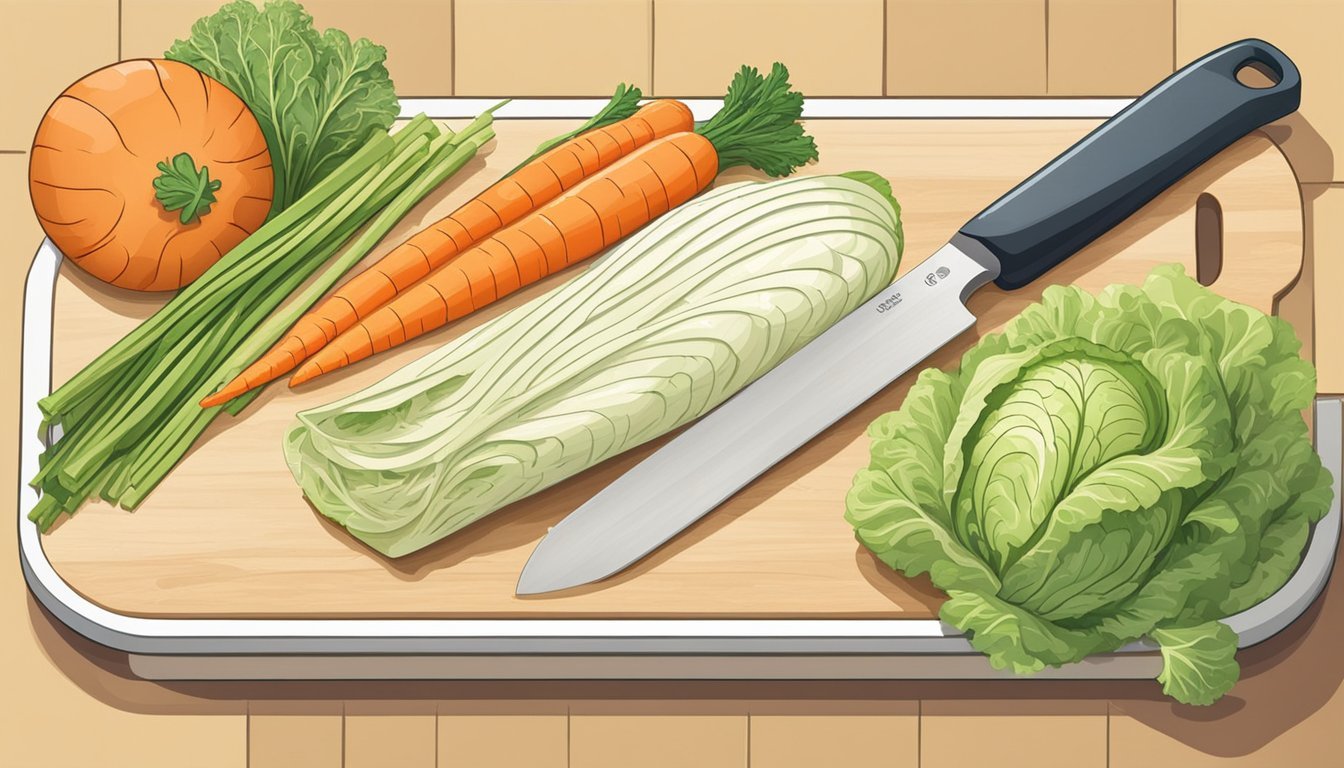How to Cook with Jicama for Crunchy Slaws
Mastering Fresh and Crisp Salads
Jicama, a root vegetable native to Mexico, brings a unique crispness to any dish, particularly when used in slaws. Its firm texture and subtly sweet flavor make it an ideal ingredient for adding a refreshing crunch. Notably devoid of the starchiness found in many tubers, jicama pairs well with a multitude of dressings and seasonings, allowing it to seamlessly integrate into a variety of slaw recipes.
When preparing jicama for slaws, it is common to julienne or shred the vegetable to complement the classic coleslaw texture. The versatility of jicama slaws means they can be dressed simply with lime juice and sea salt for a light accompaniment or combined with ingredients like balsamic vinegar, mayonnaise, or fresh herbs to create a more complex, flavorful dish. By incorporating jicama, slaws gain not only a nutritional boost but also an opportunity to elevate the dish's overall appeal through the addition of its distinctive crunch.
They are often served as a refreshing side that can cut through the richness of meats and barbecued dishes. This means that not only does jicama contribute to the aesthetic and texture of a slaw, but it also plays a crucial role in balancing flavors within a meal. Whether opting for a tangy, sweet, or spicy slaw, jicama remains a steadfast component that promises to bring a fresh dimension to the table.
Discovering Jicama
Jicama, often termed the Mexican turnip, offers a sweet and crunchy addition to salads and slaws with its white flesh. This section delves into its origins, nutritional benefits, and fundamental tips for selection, storage, and preparation.
History of Jicama
Jicama is a root vegetable that originates from the Mexican peninsula. It is a staple in Mexican-inspired dishes and has been used historically as both a culinary ingredient and a source of nutrition by indigenous peoples in the region.
Health Benefits
Packed with dietary fiber, jicama also contains vitamin C, potassium, and iron. These nutrients contribute to its reputation as a healthy choice. Additionally, jicama's rich fiber content acts as a prebiotic, aiding in digestive health.
Nutrition Information (per 100g of jicama):
Calories: 38
Fiber: ≈6g
Vitamin C: ≈20.2mg
Potassium: ≈150mg
Iron: ≈0.60mg
Buying and Storing Tips
When buying jicama, look for firm, dry roots. A fresh jicama should have a smooth skin without any signs of blemishes or wrinkles. For storing:
At Room Temperature: Short-term storage of a few days is fine.
In the Refrigerator: Place it in an airtight container for up to two weeks to maintain its crisp texture.
Preparation Basics
Preparing jicama is straightforward. First, peel the skin off with a paring knife, then proceed to slice, chop, or julienne the white flesh according to your recipe requirements. To use jicama in crunchy slaws:
Slice the peeled jicama into thin strips (julienned).
Combine with other slaw ingredients such as cabbage and carrots.
Toss with a dressing of choice for a refreshing side dish.
Jicama Slaw Recipes
Jicama slaw marries the fresh, crisp nature of jicama with other vibrant produce and dressings. These recipes range from classic combinations to innovative twists, each offering a unique take on this versatile side dish.
Classic Jicama Slaw
The classic jicama slaw recipe involves a simple mix of jicama, carrots, and both green and red cabbage. It's seasoned with lime juice, olive oil, and a pinch of sea salt for a refreshing taste. This slaw serves as a crunchy, hydrating side dish.
Ingredients:
Jicama, julienned
Carrots, shredded
Green cabbage, thinly sliced
Red cabbage, thinly sliced
Lime juice
Olive oil
Sea salt
Innovative Variations
Adventurous cooks might enjoy adding fruits like apple, pear, or mango to their jicama slaw for a sweet twist. Using a creamy dressing made from Greek yogurt or mayonnaise can offer a richer flavor profile, suitable for those looking to balance the slaw's inherent crunch with a bit of creaminess.
Suggested Add-Ins:
Apple, julienned
Pear, julienned
Avocado, diced
Mango, diced
Dressing the Slaw
Whether one desires a tangy or creamy dressing, the base typically starts with an acid such as lime juice or apple cider vinegar. For a tangier flavor, fresh lime juice mixed with a touch of honey can elevate the slaw. For a creamy version, mayonnaise or Greek yogurt can be whisked with lime juice and seasonings like cumin or cilantro.
Tangy Dressing:
Fresh lime juice
Honey
Salt
Cumin (optional)
Creamy Dressing:
Mayonnaise or Greek yogurt
Lime juice
Cilantro, chopped
Salt and pepper
Unique Combinations
Incorporating spicy elements such as cayenne pepper or jalapeños can add a zesty kick to the slaw, perfect for pairing with summer barbecue dishes. Alternatively, a hint of sweetness with honey or a ripe, finely diced apple can create a delightful contrast to the jicama's mild flavor, making the slaw a standout side for chicken, pork, or beef.
Spicy Kick:
Ground red chile pepper or jalapeño, minced
Sweetness Contrast:
Honey
Apple, finely diced
Serving and Presentation
Jicama slaw is not only a versatile side salad but also an excellent topping for tacos, burgers, or fish. Present the slaw in a clear bowl to showcase its vibrant colors. It's best served chilled, allowing the flavors to meld. Offering it as a side dish to fish tacos or pulled pork enhances both the main dish and the slaw.
Perfect Pairings:
Fish tacos
Pulled pork or chicken burgers
Barbecued meats
Expanding Culinary Horizons
When cooking with jicama, chefs have the opportunity to explore a variety of dishes and flavors. Beyond the traditional slaw, jicama's versatile nature allows it to shine in both cooked and raw preparations, offering a crunchy texture and a bright, nutty flavor.
Beyond Slaws
Jicama is more than just an addition to slaws. It can be transformed into jicama fries—a simple, healthier alternative to regular potato fries. The root vegetable's firm flesh maintains a satisfying crunch, even after cooking, making it a novel ingredient in vegan and vegetarian dishes (What wine goes well with vegetarian dishes?).
Cooking Techniques
One can cook jicama using various techniques to bring out its unique texture and subtly sweet flavor. It can be roasted to a light crispness, sautéed for a quick addition to stir-fries, or even steamed to retain its characteristic bite. Each technique can contribute to a dish's overall flavor profile, pairing especially well with a hint of chili powder or lime for a tangy kick.
Pairing with Flavors
Jicama pairs well with a range of flavors from sweet to tangy. Its mild, slightly nutty taste complements:
Spicy elements like red pepper flakes
Fresh herbs and vegetables such as cilantro and red bell pepper
Citrusy notes found in lime juice or green onions
By incorporating these ingredients, one can create a bright and flavorful mix that heightens jicama's natural appeal.
Non-Slaw Jicama Dishes
Diversifying jicama use further, chefs should consider adding the root vegetable into tacos, enchiladas, and even burgers for an extra crunch and freshness. Its sturdy texture makes it an excellent vehicle for both flavor and protein, creating more complex and substantial vegan options. Simple additions like thinly sliced jicama can refresh the texture profile of a typical burger or enchilada, offering a crunchy contrast to softer elements.
Additional Resources
In crafting the perfect crunchy jicama slaw, readers may seek further education and insight. The following resources can provide detailed recipes, personal experiences, and health-related information to enhance one’s cooking journey.
Recipes and Guides
For those eager to explore a variety of jicama slaw recipes, a multitude of online guides and ebooks are available. These resources often come equipped with step-by-step instructions and high-resolution images to aid cooking precision. Readers should look for those with high ratings, which typically indicate both great taste and clarity of instructions.
Ebooks: Search for ebooks specializing in slaw recipes for a comprehensive guide that ranges from basic to advanced techniques.
Online Recipes: Locate highly-rated jicama slaw recipes with precise nutrition information, ensuring each dish is both delicious and healthy.
Readers' Experiences and Suggestions
Comments and suggestions from a diverse community of home cooks can offer a wealth of knowledge. Personal tweaks to recipes and recommendations for jicama slaw variations are commonly shared.
Comments: Check comments under recipes for readers’ experiences and tips.
Ratings: Consider the collective wisdom revealed through recipe ratings to gauge overall satisfaction and success.
Nutritional Information and Health Tips
Jicama is celebrated for its fiber-rich profile, serving as a prebiotic that supports digestive health. Many slaw recipes that feature jicama can also be gluten-free, catering to those with specific dietary needs.
Nutrition Information: Seek out slaws with detailed breakdowns of calorie counts and macro nutrients.
Health Benefits: Utilize resources that explain jicama's full spectrum of health benefits, aligning culinary choices with wellness goals.
Conclusion
Jicama slaw stands out as a refreshing and healthy addition to any meal. Its unique crunchy texture and mild, sweet flavor profile allow it to blend effortlessly into a variety of slaw iterations. Originating from Mexican cuisine, jicama adds a delightful twist to the traditional slaw, aligning with a wellness-conscious diet without compromising taste.
Health Benefits:
Jicama is low in calories but rich in vital nutrients, making it an excellent component for a nutritious diet. It is high in dietary fiber which aids in digestion.
Versatility:
Easily integrated into various slaw recipes.
Complements both sweet and savory ingredients.
Suitable for Mexican-themed dishes.
Preparation Tips:
Jicama should be peeled and sliced thinly to maximize its textural impact in slaw.
Its ability to absorb dressings enhances flavor depth.
Incorporating jicama into slaws infuses a playful variety into culinary routines. It offers a pleasing crunch, whether it is a primary ingredient or a complementary texture. Chefs and home cooks alike can confidently utilize jicama in their slaw recipes knowing it will contribute to both the taste and healthfulness of their dishes.
References and Citations
When exploring the culinary versatility of jicama in crunchy slaws, a few references stand out for their practicality and depth. They collectively provide an array of recipes, tips on preparation, and nutritional insights, becoming valuable resources for home cooks and culinary professionals alike.
Recipe Resources
For innovative jicama slaw recipes, the following sources offer guidance:
Minimalist Baker Recipes presents a simple yet flavorful Crunchy Jicama Slaw. This source is known for quick and health-conscious recipes.
Isabel Eats introduces a variation featuring cilantro and lime, infusing a vibrant flavor profile ideal for a refreshing side dish.
The Gracious Wife provides a recipe that is a mix of textures, showcasing jicama's role in a balanced slaw.
Spend with Pennies offers a recipe with customizable heat levels, suitable for those who prefer an extra spicy kick.
E-Books and Online Resources
Cooks can often find comprehensive guides and e-books dedicated to slaw recipes, including chapters on using jicama as a main ingredient, through online culinary bookstores or library databases.
Nutrition Information
Jicama's nutritional attributes are regularly detailed on health websites and in nutrition-focused cookbooks. It's often highlighted for its high fiber content and low-calorie count, making it an excellent choice for slaws intended for health-conscious diners.
The sources cited provide foundational knowledge, creative recipes, and nutritional context for those looking to incorporate jicama into their slaw preparations. They serve as a springboard for further culinary exploration and for honing skills in creating dishes with this crunchy root vegetable.
Acknowledgments
The creation of culinary content often involves the contribution of various individuals and entities. In the context of culinary guidance for using jicama in crunchy slaws, it's essential to recognize the efforts and expertise that make such knowledge sharing possible.
Firstly, appreciation is extended to the culinary experts who have explored the versatility of jicama and shared their insights. These individuals' experiences serve as a foundation for others to build upon, bringing diverse flavors to our tables.
Respect is also due to the online culinary platforms and food bloggers like Minimalist Baker, Spend With Pennies, Isabel Eats, Savor the Best, and The Gracious Wife. Their published recipes provide a valuable repository of knowledge.
Additionally, thanks to the home cooks and community members who experiment with these recipes and provide feedback. This collective wisdom constantly refines the culinary uses of jicama.
Lastly, gratitude is offered to those who cultivate and supply jicama, enabling everyone to enjoy its fresh, crunchy texture. Their dedication ensures a steady supply of quality produce.
Contributing Parties Role in Culinary Development Culinary Experts Recipe innovation and foundational techniques Food Bloggers Recipe dissemination and personalization Home Cooks & Community Feedback and continuous improvement Producers & Suppliers Providing quality ingredients
These acknowledgments highlight the importance of each participant in the journey from farm to table, underscoring the collaborative nature of cooking with jicama.




